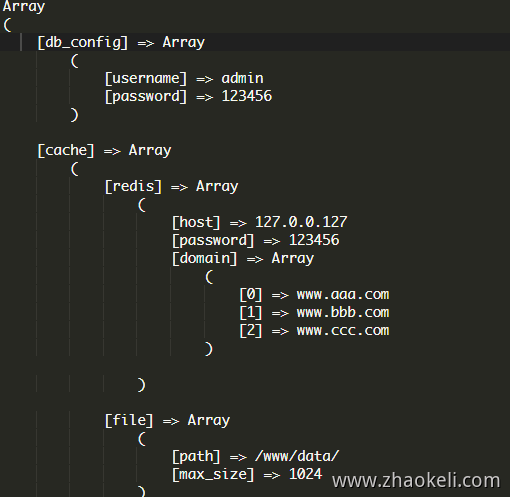php从ini文件中解析多维数组
版权声明:
本文为博主原创文章,转载请声明原文链接...谢谢。o_0。
更新时间:
2020-11-12 22:57:47
温馨提示:
学无止境,技术类文章有它的时效性,请留意文章更新时间,如发现内容有误请留言指出,防止别人"踩坑",我会及时更新文章
php解析ini格式的文件自带有两个函数parse_ini_file和parse_ini_string,本身是可以解析二维数组的,但是不支持二维以上,但是官方示例也给出了解析二维以上的函数如下
/**
* 解析ini文件支持多维数组解析
* @link https://www.php.net/manual/zh/function.parse-ini-file.php#114842
* @param $file
* @param false $process_sections
* @param int $scanner_mode
* @return array|false|mixed
*/
function parseIniStringMulti($iniString, $process_sections = false, $scanner_mode = INI_SCANNER_NORMAL)
{
$explode_str = '.';
$escape_char = "'";
// load ini file the normal way
$data = parse_ini_string($iniString, $process_sections, $scanner_mode);
if (!$process_sections) {
$data = [$data];
}
foreach ($data as $section_key => $section) {
if (!is_array($section)) {
continue;
}
// loop inside the section
foreach ($section as $key => $value) {
if (strpos($key, $explode_str)) {
if (substr($key, 0, 1) !== $escape_char) {
// key has a dot. Explode on it, then parse each subkeys
// and set value at the right place thanks to references
$sub_keys = explode($explode_str, $key);
$subs =& $data[$section_key];
foreach ($sub_keys as $sub_key) {
if (!isset($subs[$sub_key])) {
$subs[$sub_key] = [];
}
$subs =& $subs[$sub_key];
}
// set the value at the right place
$subs = $value;
// unset the dotted key, we don't need it anymore
unset($data[$section_key][$key]);
}
// we have escaped the key, so we keep dots as they are
else {
$new_key = trim($key, $escape_char);
$data[$section_key][$new_key] = $value;
unset($data[$section_key][$key]);
}
}
}
}
if (!$process_sections) {
$data = $data[0];
}
return $data;
}
$inistr=<<<eot
[db_config]
username=admin
password=123456
[cache]
redis[host]=127.0.0.127
redis[password]=123456
redis.domain[]=www.aaa.com
redis.domain[]=www.bbb.com
redis.domain[]=www.ccc.com
file[path]=/www/data/
file[max_size]=1024
[app]
debug=true
trace=false
[multi]
foo.data.config.debug = true
foo.data.password = 123456
[normal]
foo = bar
; use quotes to keep your key as it is
'foo.with.dots' = true
[array]
foo[] = 1
foo[] = 2
[dictionary]
foo[debug] = false
foo[path] = /some/path
[multi]
foo.data.config.debug = true
foo.data.password[] = 123456
foo.data.password[] = 123456
eot;
$data=parseIniStringMulti($inistr,true);
print_r($data);
echo $data['cache']['redis']['host'].PHP_EOL;
echo $data['cache']['redis']['password'].PHP_EOL;上面函数为了测试方便,参数传的是INI字符串,实际使用中可自行修改的parse_ini_file





